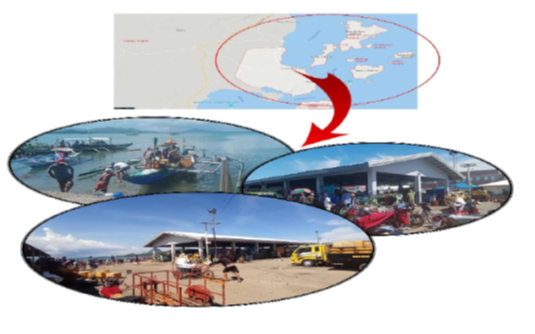


Indian Journal of Science and Technology
Year: 2021, Volume: 14, Issue: 3, Pages: 208-219
Original Article
Razel Zerrudo Padronia1*
1Faculty, Teacher Education Department, Northern Iloilo Polytechnic State College, Concepcion Campus, Concepcion, Iloilo, Philippines
*Corresponding Author
Email: [email protected]
Received Date:05 October 2021, Accepted Date:01 January 2021, Published Date:27 January 2021
Purpose: The study aims to determine the volume of pelagic fishes’ catch landed in the Concepcion Fish Port after the close season. This study’s formulations supported the status of marine protected areas in Concepcion’s municipality, specifically in Poblacion, as to its sustainability for market and entrepreneurship. Methods: This study employed a descriptive survey research design. The participants were purposively selected fishers using commercial and municipal boats but residents of Concepcion’s Municipality. The data gathering was made through documentation and calculation of fish caught and identifying local, English, and scientific names. Results/Application: Results showed that commercial and municipal fishing boats were allowed to fish in Concepcion Municipal water. The fishing gears for municipal fishing boats used were boat drive-n net (DIN) or palubog, drift gillnet (DGN) or pamu, fish trap (FT) or bobo, encircling gill net (EGN) or likos, bag net (BGN) or baskal. Furthermore, with about 31 species of different marine resources, DIM topped the list, followed by DGN in a total of 22 species, FT 11, and both EGN and BGN only recorded one specie for municipal fishing gears. While in commercial fishing gear, ST has 27 marine species, 18 for RNAC, 9 for RNFF. The records revealed 54 species of pelagic and 12 other marine organisms caught in the Concepcion waters. The top 5 pelagic fishes dominated the lists were Sardinella lemuro or Bali sardinella (Tuloy), weighing almost 52,611.5; Scolopsis taenioptera or Lattice monocle bream (Opo-opos), weighs around 3,585.1 kilogrsm. Then, Gerres oyena or Common Silver Body (Latab), 2,104.2 kilograms; Scomberomorus commerson or Narrow barred Spanich Mackerel (Tangigue), 1,708.5 kilograms; and, Selaroide leptulepsis or Yellow Stripe Scad (Balinuan), 1,457.2 kilograms. For non-pelagic, the top of the survey was Phoyololigo duvauceli or Indian squid (Lokus) weighs around 5,000 kilograms. The results showed closed season is an effective way for fish reproduction of different pelagic fishes in the Visayan Sea.
Keywords: Visayan sea; catch volume; Pelagic fish; Pelagic zone; fishing gears
© 2021 Padronia.This is an open access article distributed under the terms of the Creative Commons Attribution License, which permits unrestricted use, distribution, and reproduction in any medium, provided the original author and source are credited. Published By Indian Society for Education and Environment (iSee)
Subscribe now for latest articles and news.